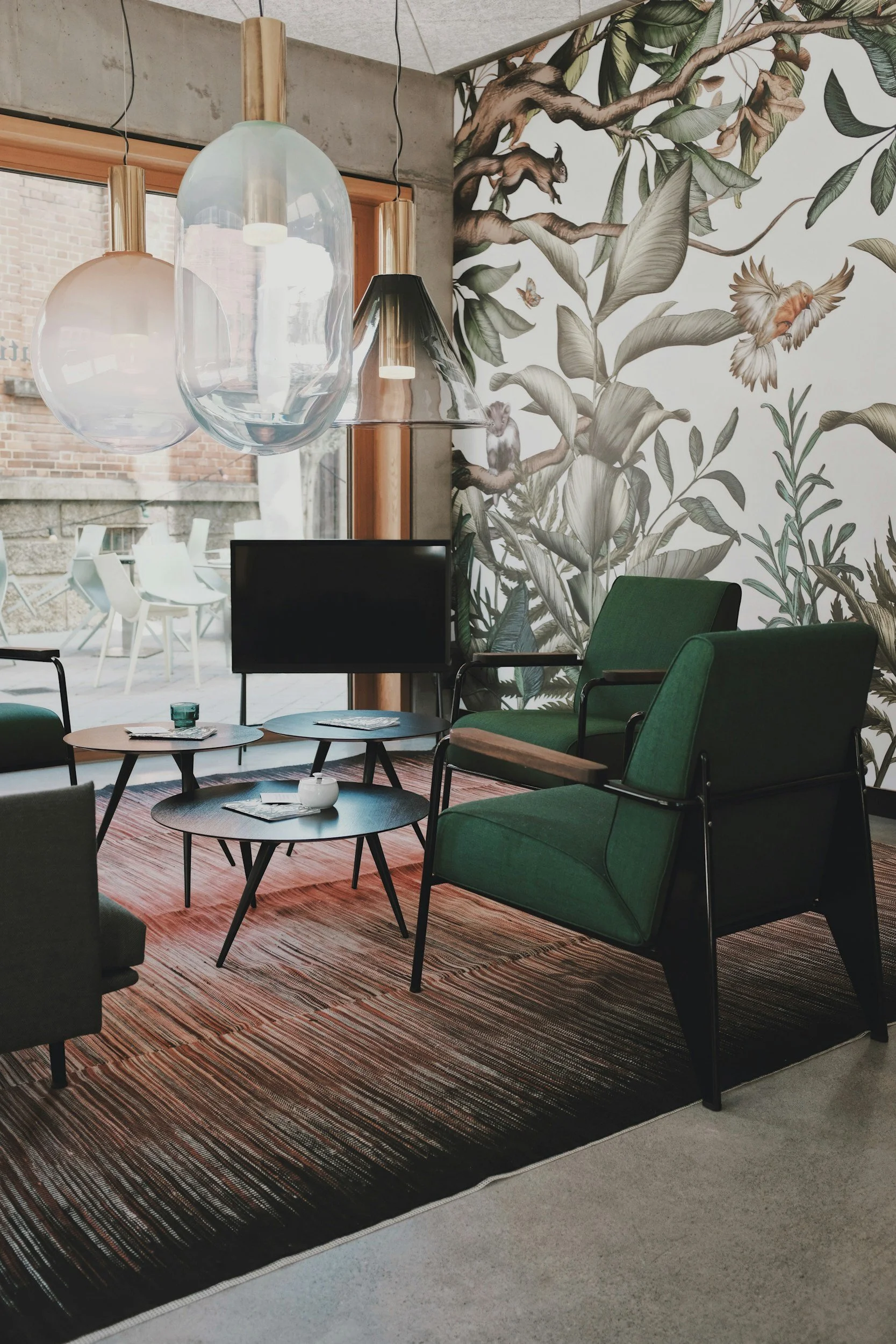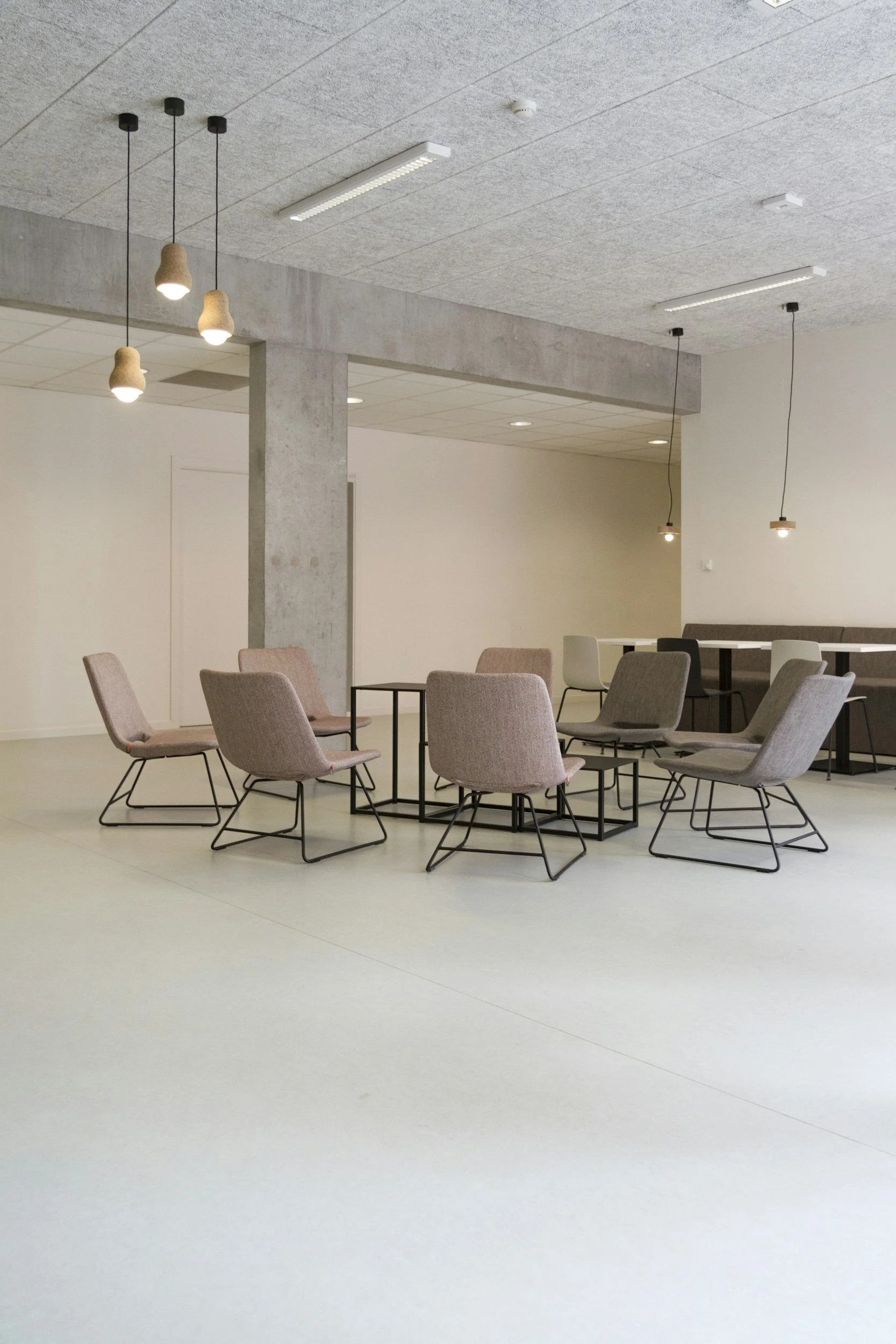Architectural Design vs. Interior Design
When it comes to creating a functional, beautiful space, two professions often come to mind: architectural design and interior design.
In the United States, these fields are regulated and recognized as distinct professions, each playing a critical role in construction and renovation projects.
Whether you’re building a home in Los Angeles or renovating an office in New York City, understanding the differences between architectural design and interior design is key to achieving your vision.
This guide breaks down their roles, key differences, and how they complement each other so you can make informed decisions for your project.
What Is Architectural Design?
Architectural design is about creating the structure, functionality, and overall framework of buildings.
Architects must follow strict building codes and zoning laws that vary by state and municipality to ensure safety and compliance.
To understand the profession better, here are the core responsibilities.
Core Responsibilities of an Architect
Structural Integrity and Functionality
Architects design everything from the foundation to the roof (with the help of engineers for the structural design).
In the US, they follow building standards such as those set by the International Building Code (IBC) to ensure safety and functionality.
Space Planning and Layout
Architects focus on optimizing the use of space, whether it’s a single-family home in Texas or a skyscraper in Chicago.
They take into account practical needs like traffic flow, accessibility (per ADA guidelines), and environmental considerations.
An architect must understand user behavior well to figure out the best way to plan the space. So it would require knowledge of the different use-cases, (for instance, a knowledge on how the hospital works to design hospitals).
Permitting and Compliance
Architects help clients navigate the permitting process, ensuring the project adheres to local zoning laws and regulations.
This can vary widely depending on whether you’re in a rural area or a dense urban center.
Sustainability and Innovation
With LEED certification becoming a priority, many architects incorporate energy-efficient materials, renewable energy solutions, and sustainable designs into their projects.
Although it can be costly to consider these design solutions upfront, it can be beneficial for the clients and users in the long run.
Key Deliverables from an Architect
The deliverables will be based on what your clients need and your contracts.
Here are the essentials:
Detailed blueprints and technical drawings
Site plans that adhere to local zoning requirements
3D renderings showcasing the proposed structure
Unlike interior designers, architects typically take charge of the design and planning of the whole structure.
Here are some examples.
Famous Examples of Architectural Design in the US
Iconic structures like the Empire State Building in New York, Fallingwater in Pennsylvania, and the Walt Disney Concert Hall in Los Angeles highlight the range and creativity of architectural design in America.
Empire State Building
Empire State Building
The Empire State Building is one of the most iconic skyscrapers in the world, celebrated for its groundbreaking architectural design, Art Deco style, and engineering innovation.
The building is characterized by bold geometric forms, sleek lines, and decorative elements. Its design reflects the optimism and industrial progress of the 1930s.
While designed during an era of industrial growth, the Empire State Building has undergone significant retrofitting to enhance energy efficiency, such as upgrading insulation and modernizing its HVAC system.
But beyond its architectural design, the Empire State Building symbolizes ambition and resilience, especially as it was constructed during the Great Depression.
Its aesthetic and functional design continues to influence skyscraper architecture globally.
Fallingwater
Fallingwater by Frank Lloyd Wright
Fallingwater, designed by Frank Lloyd Wright in 1935, is one of the most celebrated architectural masterpieces of the 20th century.
Known for its harmony with nature and groundbreaking modern design, it exemplifies Wright’s philosophy of organic architecture, blending the built environment seamlessly with its natural surroundings.
Fallingwater is uniquely designed to appear as though it grows out of the landscape, with large terraces that extend over Bear Run stream.
The home is now a UNESCO World Heritage Site and continues to inspire architects to prioritize harmony with the environment.
Walt Disney Concert Hall
Walt Disney Concert Hall by Frank Gehry
The Walt Disney Concert Hall, designed by renowned architect Frank Gehry, is an architectural masterpiece located in downtown Los Angeles.
Opened in 2003, it’s celebrated for its sculptural, futuristic design and exceptional acoustics, making it both a visual and auditory landmark.
The concert hall exemplifies Deconstructivism, characterized by fragmented forms, unconventional geometries, and a sculptural aesthetic.
The Walt Disney Concert Hall is one of Gehry’s most acclaimed works and has become a symbol of Los Angeles’ identity as a hub of innovation and art.
What Is Interior Design?
Interior design in the US goes beyond aesthetics—it’s about creating functional, stylish spaces tailored to individual needs and preferences.
Interior designers are often hired for residential, commercial, and hospitality projects, offering services that blend creativity with practicality.
Core Responsibilities of an Interior Designer
Enhancing Aesthetics and Functionality
Interior designers transform spaces by choosing color schemes, lighting, and furniture that reflect the client’s vision while improving functionality.
Space Utilization and Layout Optimization
In the US, open-concept designs are popular for homes, while efficient layouts are prioritized in office spaces to maximize productivity.
Material and Finish Selection
Designers often work with manufacturers and suppliers to source flooring, countertops, and furniture that fit the project’s style and budget.
Understanding Codes and Regulations
While less involved in structural compliance, interior designers must ensure materials meet fire safety standards and ADA requirements for accessibility in commercial projects.
Key Deliverables from an Interior Designer
Interior designers often work hand-in-hand with architects. Sometimes, directly with clients.
Here are the typical deliverables:
Mood boards with curated styles and materials
Furniture layouts tailored to the space
Suggestions for finishes and fixtures (e.g., lighting, cabinetry, flooring)
Here are some examples of interior design projects for inspiration.
Examples of Interior Design in the US
From the mid-century modern homes in Palm Springs to contemporary Manhattan penthouses, interior designers create spaces that are uniquely American in style and functionality.
Mid-century Modern Homes
Mid-century modern interior design is a timeless style that emerged in the mid-20th century (roughly 1945–1969) and continues to influence contemporary design.
Known for its simplicity, functionality, and connection to nature, this style focuses on clean lines, organic shapes, and practical spaces.
The design emphasizes uncluttered spaces with a focus on practicality. Every piece of furniture and decor serves a purpose.
Straight, horizontal lines dominate the design, complemented by smooth curves in furniture and decor.
Materials like wood, glass, and metal are also commonly used to create a balanced aesthetic.
What’s more, earthy hues inspired by nature, such as olive green and walnut brown, are often used for furniture and decor.
Decor is minimal, featuring geometric patterns, abstract art, and sculptural lighting.
Contemporary Manhattan
The contemporary Manhattan interior design style reflects the sophisticated, urban lifestyle of New York City.
It combines modern aesthetics, luxurious materials, and functional design to create elegant yet livable spaces.
With an emphasis on clean lines, neutral palettes, and high-end finishes, this style is perfect for urban dwellers who value both form and function.
Also, while contemporary design leans modern, Manhattan interiors often incorporate soft textures and warm tones to balance the urban edge.
For the colors, a neutral foundation of whites, grays, and beiges are used. While accents in bold, rich tones such as deep navy, emerald green, or black add contrast and depth.
Having said this, Contemporary Manhattan interior design encapsulates the perfect balance of luxury and practicality, creating refined, modern spaces that feel both comfortable and cosmopolitan.
Key Differences Between Architectural Design and Interior Design
Here’s how architectural design and interior design differ:
1. Scope of Work
Architectural Design: Focuses on the structure, exterior, and overall functionality, including load-bearing walls and building systems.
Interior Design: Concentrates on the interiors, from furniture placement to choosing the perfect paint color.
2. Project Timeline
Architectural Design: Architects are involved from the start, from site selection to permitting and construction oversight.
Interior Design: Interior designers typically enter the process later, once the structure is complete or nearing completion.
3. Licensing and Certification
Architects: Must be licensed in the US by passing the Architect Registration Examination (ARE). Many also join the American Institute of Architects (AIA).
Interior Designers: While certification varies by state, many pursue the NCIDQ Certification to demonstrate expertise.
4. Tools and Technology
Architects: Use advanced software like AutoCAD, Revit, and BIM for precise technical drawings.
Interior Designers: Utilize tools like SketchUp, Photoshop, and mood boards to present ideas visually.
5. Cost Range
Architects typically charge higher fees because their work includes structural design, permitting, and project management.
Interior designers may charge an hourly rate, a flat fee, or a markup on materials.
How Architectural Design and Interior Design Complement Each Other
For the best results, both architects and interior designers should collaborate.
In the US, this collaboration is particularly important in residential and commercial projects where style and functionality must align seamlessly.
Examples of Successful Collaboration
Residential Projects: An architect designs a home with vaulted ceilings, while the interior designer uses lighting and decor to highlight this feature.
Commercial Spaces: Architects create the structural layout for an office, while interior designers optimize it for employee productivity with ergonomic furniture and soundproofing.
Challenges Without Collaboration
A lack of coordination can result in mismatched outcomes, such as poorly placed structural elements that clash with the interior design vision.
Common Misconceptions About Each Profession
“Architects Can Handle Interior Design, and Vice Versa”
While some architects and designers offer overlapping services, their core expertise is different.
For example, an architect may design the kitchen layout, but an interior designer ensures it’s functional and aesthetically pleasing.
“Interior Design Is Just Decorating”
In the US, interior design often includes technical knowledge, such as ensuring that materials meet fire codes or ADA requirements.
“Architectural Design Doesn’t Influence the Interior”
In reality, architectural decisions like window placement or ceiling height directly impact interior design possibilities.
When Do You Need an Architect vs. an Interior Designer?
Hire an Architect If:
You’re building a new home or commercial structure.
You’re making significant structural changes, like adding a second story.
You need help navigating permits and local building regulations.
Hire an Interior Designer If:
You want to refresh the look and feel of a space without structural changes.
You need expert advice on furnishings, color palettes, and decor.
You want to optimize an interior for functionality and comfort.
Hire Both If:
You’re planning a large-scale renovation or new construction where structural and aesthetic elements must align.
Final Thoughts
Architectural design and interior design are two distinct but complementary professions.
Architects focus on the structural integrity and functionality of a building, while interior designers bring it to life with thoughtful aesthetics and layout planning.
Understanding their roles ensures your project is not only safe and compliant but also stylish and functional.
Whether you’re building from scratch in Chicago or updating a home in Dallas, the right professional—or team—can make all the difference.





